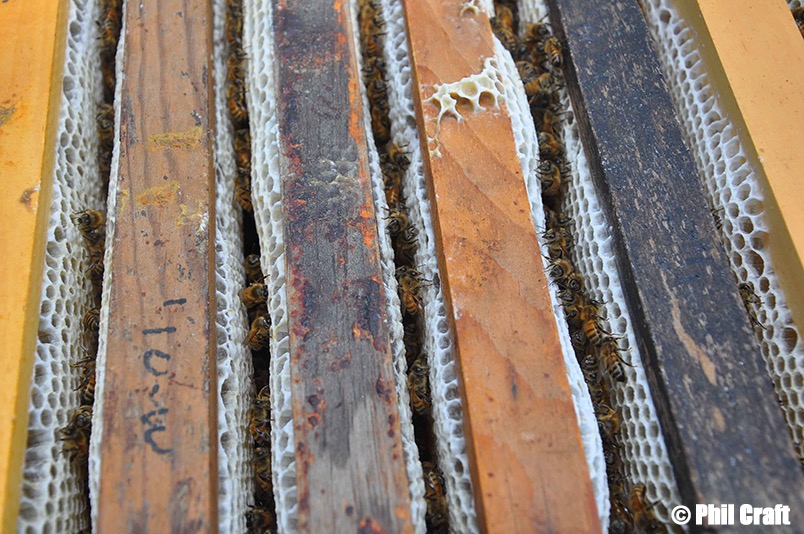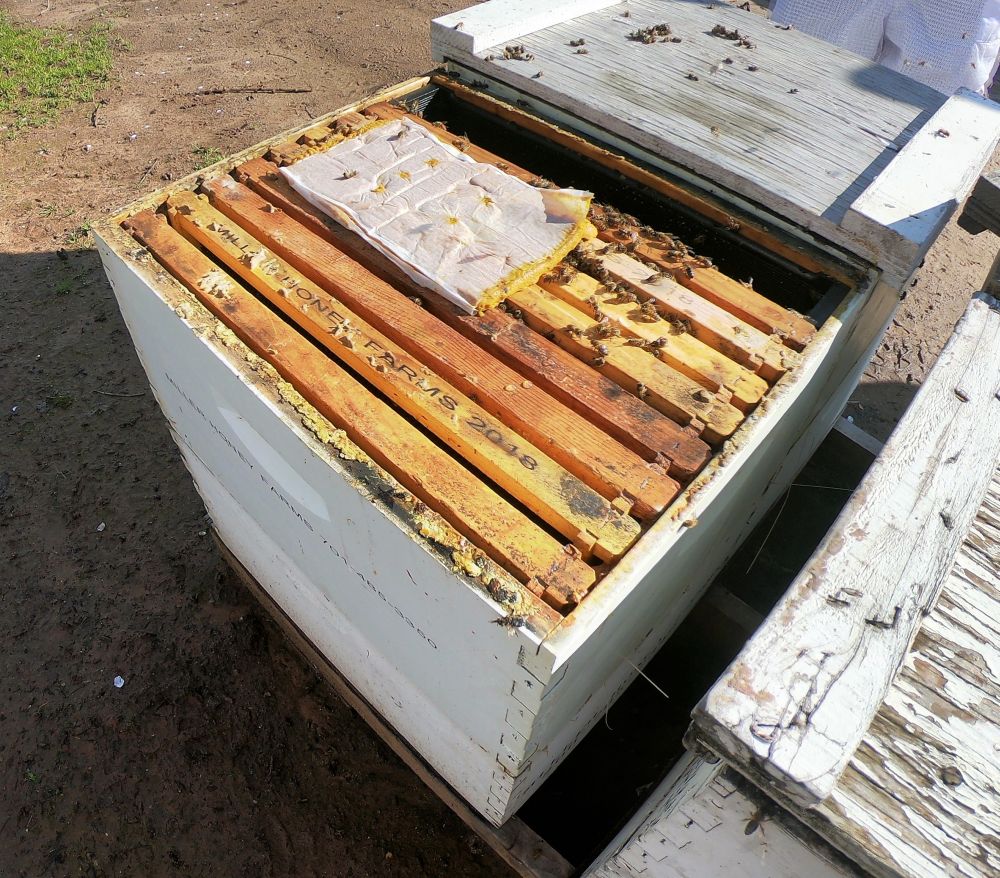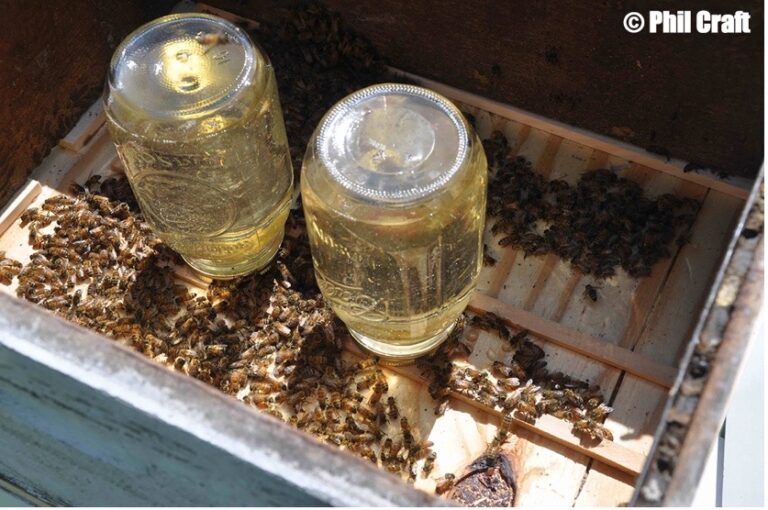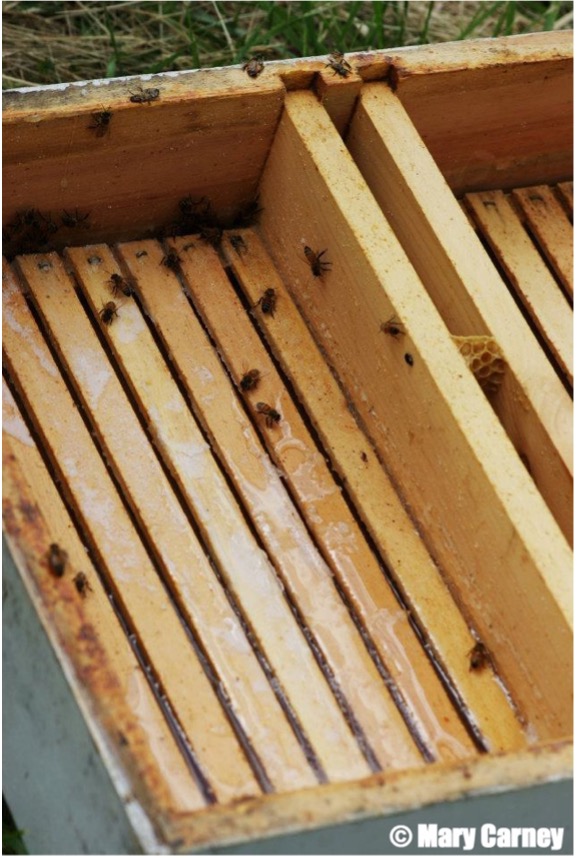Phil Craft, our technical advisor in the U.S.A., is the former Kentucky State Apiarist. We asked him to share some his knowledge about the feeding of your honey bees
Farmers are accustomed to feeding and caring for animals, but sometimes it’s difficult to think of honey bees as livestock. After all, they are basically wild creatures for whom we provide temporary shelter in exchange for rent paid in the form of liquid gold. Yet, research has shown that even before they faced the threats of varroa mites, loss of native forage, and widespread pesticide use, unmanaged colonies in the wild suffered losses of up to 50% a year. As husbandmen, we should be able to do better than that. Making sure that our bees have adequate nutrition at the proper times is one way to improve the odds.
More is not always better. Nectar and pollen provide, not only the calories, but also the proteins and minerals that a colony needs to thrive. When natural sources are available, we should not be offering artificial substitutes. In general, honey bees benefit from feeding in three circumstances.
Newly installed packages will benefit from feeding until they have time to draw out comb and begin filling it with nectar and pollen. This could take from a few days to a few weeks.
Early spring feeding – before plentiful floral sources are available – stimulates brood production and helps a colony to begin building up its population in preparation for the spring nectar flow. Since bees will continue to make honey as long as the flow lasts and storage space exists, that means more honey for the beekeeper.
In the Midwest, dry summers often create a dearth, which usually yields to an autumn bloom. Goldenrod, asters, and other late year flowers provide the honey that has to last the colony through the cold months. Some parts of the country escape the summer dearth, but may also suffer longer, more severe winters. Even mild climates experience rainy seasons or periods of low bloom.
The quantity of food stores a hive requires for overwintering depends on region, climate, and number of bees. As a rule of thumb, a two-deep hive in a moderate zone should have at least 55 lbs. of honey; in northern states, as much as 125. A full deep frame holds about 6 lbs. and a full shallow about 2.5, or you can get an idea of the weight by hefting one side of the brood box. The important thing is to gauge winter stores and feed if necessary, in the fall, well before cold weather begins.

Most late fall feeding is done with a thick syrup made with a 1:2 ratio of water to white sugar, which the bees tend to store. In spring and early fall, a 1:1 mixture stimulates brood production. Some beekeeping suppliers sell high fructose corn syrup formulated for bees, but do not use the corn syrup sold in groceries, or for that matter syrup made with brown sugar, molasses, or other sweeteners; they can be harmful to bees. Honey, dark from long storage, or otherwise deemed unacceptable for human consumption, is always welcomed by the original manufactures.
But honey bees do not live by nectar and honey alone. There are a number of protein supplements available to augment natural pollen sources. These can be purchased as patties (placed on the top of the hive), or in the form of a powder, which can be made into patties or sprinkled dry on top of the frames. Pollen is essential to the development of larvae and its presence stimulates the bees to produce brood, so pollen substitutes are best used in the early spring and early fall. That’s when colonies need to build up their populations to take full advantage of the nectar flow in the one case, and to create a critical mass of long-lived winter bees in the other.

Fondant, or bee candy (easily made at home from recipes available online), is a solid form of sugar designed for emergency winter feeding. It should only be used as a last resort when a colony is at risk of starvation, but it can be a life saver then.
Bee supply companies sell a variety of feeders; all with advantages and disadvantages. The entrance feeder is one common type. It consists of an inverted jar on top of a shallow plastic tray which fits in the entrance of the hive. This type is fairly inexpensive and is the most convenient for the beekeeper. It’s easy to see how much syrup is left and easy to refill. Unfortunately, it is also easily accessible to bees from neighboring hives, which makes it vulnerable to robbing. Foragers from a stronger hive may be attracted by the syrup, approach the entrance to feed, then enter the hive and rob it of all its stores.


Frame feeders are much less susceptible to robbing since they are wholly within the hive. In fact they are deep, narrow containers which fit in the space of a brood frame. They can be messy to refill and, of course, one must open the hive to do it, or even to check on the amount of syrup left. Because these feeders are deep and entered from the top, bees tend to drown in them unless provided with flotation devices. (Small sticks dropped on top after the syrup goes in will do.) This type is also more expensive than other kinds.
Top feeders are convenient to use and are available from suppliers, though more expensive, but homemade versions are cheap and easy if the beekeeper has a few extra hive bodies around. A couple of popsicle sticks or twigs placed over the inner cover, an inverted jar with some holes punched in the lid, and a hive body with a cover complete the equipment. Top feeders can be checked and refilled just by lifting the cover, and they do not invite robbing unless the boxes are in very bad shape indeed. (A little duct tape will cover any holes which might serve as a back door to marauders.
There are too many variables involved in knowing when, what, and how to feed; doing it by the calendar just doesn’t work. To be a successful beekeeper requires inspecting hives frequently in order to understand what is going on at any given time. That applies, not just to feeding, but also to assessing whether a colony is queen right, mite infested, weak, or diseased. Besides, it’s fascinating. Isn’t that partly why we became beekeepers in the first place?
Join the Véto-pharma community and receive our quarterly newsletter as well as our occasional beekeeping news. You can unsubscribe at any time if our content does not suit you, and your data will never be transferred to a third party!
© 2019-2025, Véto-pharma. All rights reserved